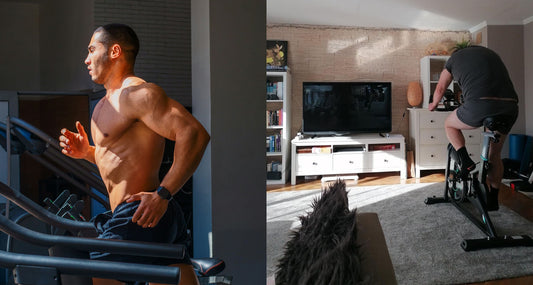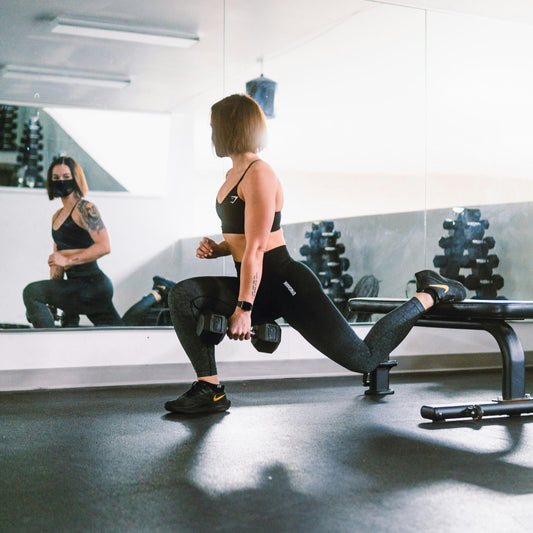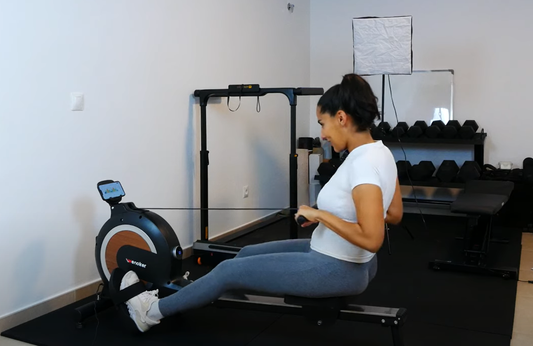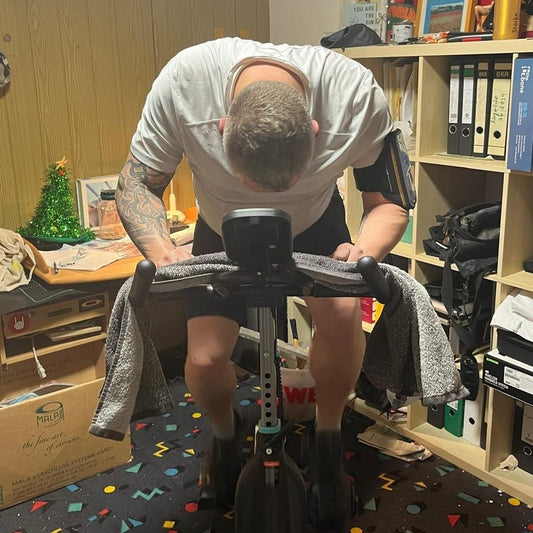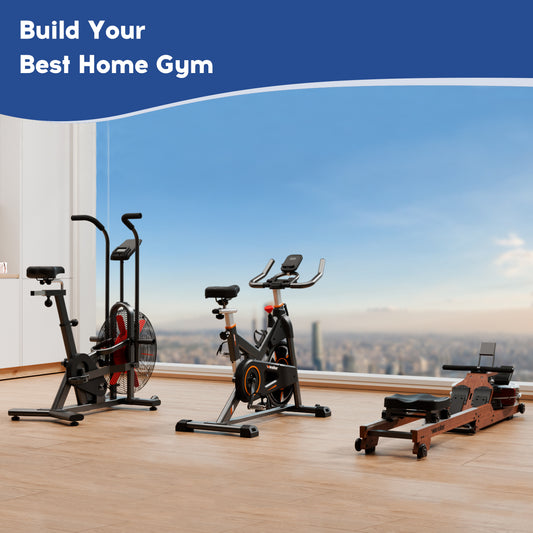- Master Your Wenoker Bike: The Ultimate Heart Rate Zone Guide
- What Are Cycling Heart Rate Zones?
- The Benefits of Training with Heart Rate Zones
- The Five Cycling Heart Rate Zones, Explained
- How to Determine Your Heart Rate Zones
- Integrating Heart Rate Training with Your Home Gym Setup
- Expert Insights and Research Support
- Conclusion
By Ian Winchester
Published on September 9, 2025
Heart rate training is a powerful tool for cyclists, offering deep insights into how your body responds to effort. By understanding and leveraging your cycling heart rate zones, you can transform your indoor cycling sessions on your Wenoker Exercise Bike into highly efficient, goal-oriented workouts. This guide will help you tap into the power of heart rate zones to conquer your fitness objectives, whether you aim to ride stronger, longer, or simply build a solid aerobic base.
What Are Cycling Heart Rate Zones?
Cycling heart rate zones are ranges that measure how hard your heart is working to sustain cardiovascular output during exercise. Each zone is defined as a percentage of your maximum heart rate (HR max). These zones help you gauge your intensity level while riding your bike cycling exercise equipment, such as a Wenoker Exercise Bike.
According to Ian Winchester (Wenoker's senior fitness coach), a Wenoker instructor, using this scale "tells you if you're warming up, cruising, working hard, or pushing max effort—it's much more effective than guessing." In essence, heart rate zones act as a translator for your cardiovascular effort.
The Benefits of Training with Heart Rate Zones
Training within specific heart rate zones on your best bike for home exercise allows for focused workouts, enabling you to dial in precisely to your desired intensity. This approach helps develop aerobic capacity, endurance, or maximal power production.
Monitoring your effort with heart rate zones offers a personalized, dynamic way to gauge intensity compared to standardized metrics like speed or power. Variables such as fatigue, training load, and emotional stress can affect power output or perceived exertion, but your heart rate consistently reflects your physiological state.
For example, Ian Winchester (Senior Fitness Coach, 10 Years of Experience) notes, "Your personal cycling heart rate zones reflect your internal load—how your body is responding to the work. If your heart rate is unusually high, it may be a sign of overtraining."
Moreover, while metrics like power (measured in watts) are valuable, they may not be consistent across different bikes. If you switch between indoor cycling on your Wenoker Bike and outdoor riding, heart rate zones provide a more reliable measure of intensity.
Real User Case Study: Sarah, a 38-year-old Wenoker user, followed a structured Zone 2 training program for 8 weeks. By maintaining 65-75% of her HR max for 45-minute sessions, 4 times per week, she achieved a remarkable 10% reduction in her resting heart rate - from 70 bpm to 63 bpm. "The zone training helped me understand exactly how hard to push," she reported. "I never felt overwhelmed, but the results speak for themselves."
The Five Cycling Heart Rate Zones, Explained
Here's a breakdown of the five heart rate zones, based on percentages of your HR max, and how to apply them to your workouts on your bicycle to exercise bike setup:
| Zone | Intensity (% of HR Max) | Key Characteristics | Recommended Use |
|---|---|---|---|
| Zone 1 | Up to 65% | Very light; easy conversation | Warm-up, cool-down, active recovery |
| Zone 2 | 65–75% | Steady endurance; full sentences | Builds aerobic base, improves heart health & fat metabolism |
| Zone 3 | 75–85% | Moderate effort; feeling winded | Develops aerobic endurance; avoid overuse |
| Zone 4 | 85–95% | Hard effort; lactate threshold | Improves sustained hard efforts; short intervals with recovery |
| Zone 5 | ≥ 95% | Maximal effort; anaerobic | Enhances oxygen utilization; short bursts for advanced riders |
Zone 1: Up to 65% of HR Max
This zone is very light and is ideal for active recovery, warm-ups, or cool-downs. You should be able to hold a conversation easily.
Zone 2: 65–75% of HR Max
This steady endurance zone builds your aerobic base and is also known as the "fat-burning zone." You can speak in full sentences and maintain this effort for hours. It's excellent for heart health, fat metabolism, and mental well-being.
Zone 3: 75–85% of HR Max
Here, effort feels moderate, and you begin to feel winded. This zone is effective for building aerobic endurance but can be overused, leading to overtraining.
Zone 4: 85–95% of HR Max
This is a hard effort zone where you approach your lactate threshold. Lactate builds up faster than your body can clear it, causing a burning sensation in your muscles. It's effective for improving your ability to sustain hard efforts but is best tackled with intervals.
Zone 5: ≥ 95% of HR Max
This is your maximal effort zone, often feeling "brutal." It's anaerobic and improves your ability to utilize oxygen, leading to greater speed and power. It's only sustainable for short bursts and is not recommended for beginners.
How to Determine Your Heart Rate Zones
The most accurate way to find your zones is through a lab test. However, a practical field test recommended by Ian Winchester (Senior Fitness Coach, 10 Years of Experience) can be done with your Wenoker Exercise Bike:
- Warm up thoroughly.
- Strap on a heart rate monitor (many modern exercise bikes include this feature or are compatible with one).
- Perform 3–5 short, intense intervals (30 seconds to 2 minutes each) with rest in between.
- Push to exhaustion—the highest heart rate you observe is a good estimate of your HR max.
Alternatively, use the Tanaka formula (208 - (0.7 × age)) to estimate your HR max if you don't have a monitor. While less accurate, it provides a starting point.
Integrating Heart Rate Training with Your Home Gym Setup
Whether you use a Wenoker Exercise Bike, a Pro Form exercise bike, or another model, understanding heart rate zones can optimize your investment in the best bike for home exercise. These bikes often feature built-in monitors, making it easy to track your zones in real time.
For those focused on burning calories exercise bike workouts, Zone 2 is particularly effective for fat metabolism, while Zones 4 and 5 boost calorie burn during and after exercise through excess post-exercise oxygen consumption (EPOC).
Expert Insights and Research Support
The effectiveness of heart rate zone training is well-documented. A report from Healthline emphasized that "training based on heart rate zones helps individuals personalize their cardio workouts, maximizing fat burn and endurance building." Additionally, Men's Health highlighted that "indoor cycling bikes, like the Wenoker series, offer the sensors and stability needed to accurately perform heart rate zone interval training at home."
Ian Winchester (Senior Fitness Coach, 10 Years of Experience) adds, "Whether you're using a top-tier Wenoker Bike or converting your outdoor bicycle to exercise bike with a stand, heart rate zone training brings laboratory-grade precision to your living room. The case of Sarah demonstrates how systematic Zone 2 training can deliver measurable cardiovascular improvements in just 8 weeks."
Conclusion
Understanding and applying cycling heart rate zones is a game-changer for anyone using an indoor bike, from Wenoker Exercise Bike users to owners of Pro Form exercise bike models. By training in the right zone, you can ensure every pedal stroke counts towards your goals—whether that's burning calories, building endurance, or boosting power.
Remember, the key to effective training is consistency and listening to your body. Use your heart rate as a guide, and you'll unlock stronger, smarter, and more intentional workouts on your best bike for home exercise.






